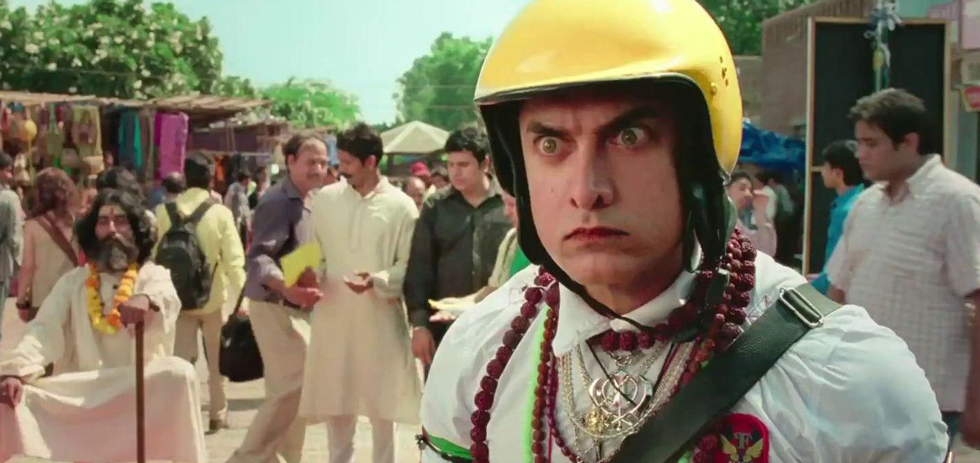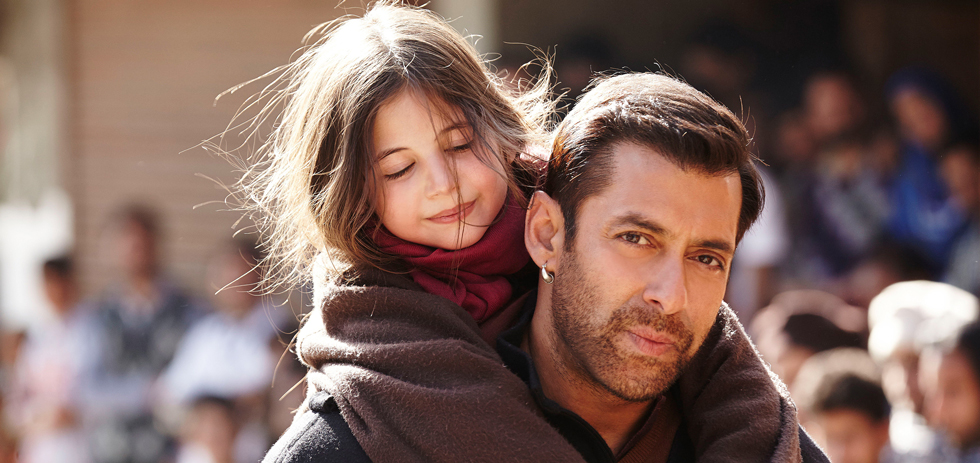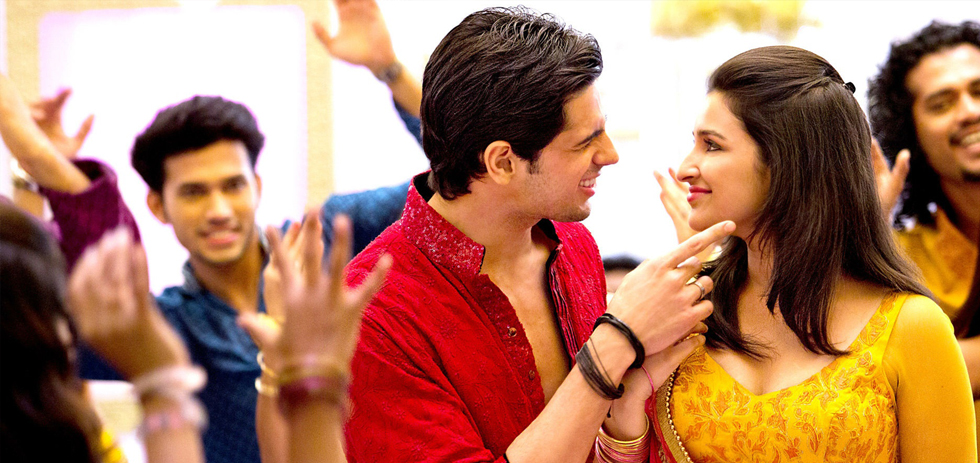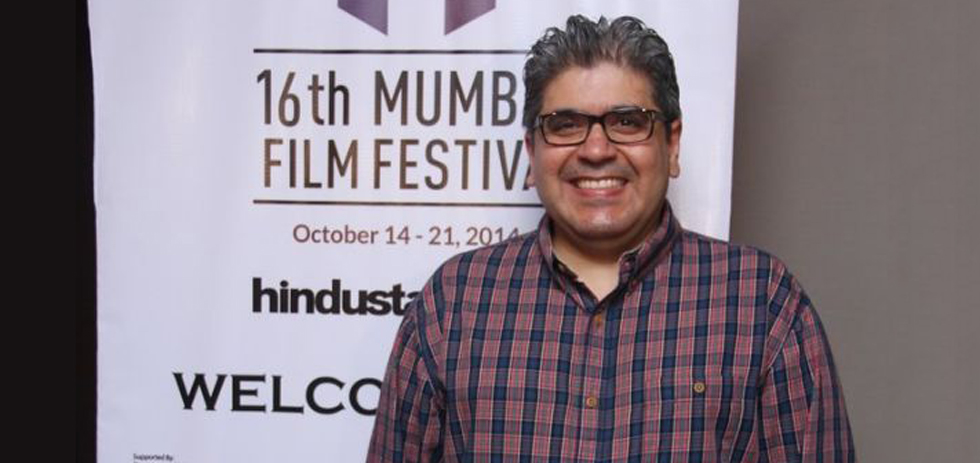Rajeev Masand is one of India’s most prominent film critics. Well known for reviewing Hindi-language films and the major Hollywood films that find a release in India, Masand is a reservoir of insightful knowledge and infectious energy when it comes to de-mystifying the dynamic landscape of Hindi cinema, more popularly known as Bollywood. During his visit to the Indian Film Festival of Melbourne, Virat Nehru had a chat with him about the challenges of being a film critic in India, the emergence of New Indian Cinema, the deification of Indian celebrities and how the information age has ruined our ability to truly discover films.
The first thing that strikes me is the unique challenge of being a film critic in India. Even if you look at Bollywood – which is a just one industry – there are so many genre expectations, the subgenres that are embedded within and they are all competing with each other. How do you balance all those competing expectations?
That’s an interesting question. I think what’s happened in the last I’d say about 10-15 years in Indian cinema and I’ll speak specifically about Hindi cinema. Hindi cinema has changed considerably. It has evolved from being the monolith – the ‘one big blockbuster’ kind of movie or the ‘one big family entertainer’ if you like. There used to be just one kind of movie that used to be made. And in the last maybe 15 years that’s changed.
There are various different kinds of cinema that are emerging. I think for a long time, film-makers used to see the audience as one collective kind of person who has a certain taste. And therefore, everyone has that same kind of taste. That’s why they used to make a certain kind of movie over and over again. The kind of movie that has a little bit of comedy, little bit of action, little bit of drama, little bit of melodrama. And then they (film-makers) started realising that the audience isn’t just one person, it is many people and they have many tastes. So each of their tastes need to be catered to differently.
Which is why I think this New Indian Cinema if you like, has emerged – which is a little bit more realistic, a little bit further away from the fantasy kind of movie-making that used to happen. That also exists. The beauty of Indian cinema is that, I think, all kinds of cinema co-exist. And I think as critics, we’ve had to evolve along with Hindi cinema. No longer are we reviewing only one kind of movie. You watch in the same month films like Badlapur (2015), you watch Dum Laga Ke Haisha (2015) and you watch a big blockbuster kind of movie as well. It requires accepting that different people have different tastes and therefore different kind of movies need to be made to cater to each of those tastes.
Do you feel this new-found self-awareness comes with a certain kind of baggage? Because now that you’ve stopped seeing the audience as a collective bunch, there are bound to be more hits and misses.
Sure. Of course, that’s true. You’re right. I think film-makers are now experimenting, they are taking chances, hoping that something will stick. But I think, again, in the last few years there has been a sense of what certain audiences want to watch. There is clearly an audience that wants to watch realistic movies. There is an audience that wants to watch movies that are very far-removed from the utopian world of popular blockbuster Hindi movies. And therefore, for that kind of audience, there is a whole breed of younger film-makers that has grown up on a lot of western influences, a lot of international/foreign cinema. You see that in the films of Anurag Kashyap, Vikramaditya Motwane, Dibaker Banerjee. You see that the kinds of movies they make are very far-removed from the popular mainstream Bollywood.
But even the mainstream has been challenged. And I think that is most exciting. Even within the mainstream, it is no longer silly, logic-defying, leave your brains behind kind of cinema. Of course, that also exists. There is Welcome Back.1 There are those kind of movies that are being made. But I think the mainstream has been re-defined with films such as Vicky Donor (2012). Films like Barfi (2012), films like Kahaani (2012). And these are all being made within the mainstream space, within popular cinema. But they are definitely not what conventional Bollywood used to be.
That’s true. It’s interesting how you have described the impact of this new cinematic movement. Because not too long ago, you only had certain character actors who used to participate in such projects. But now, you also have mainstream stars crossing over and experimenting. Is that helping their image as well, in a way, to diversify?
I certainly think it is. That realisation also dawned on the popular stars as well that they were just doing the same kind of movies over and over again. When this new breed of film-makers came along, they saw in that an opportunity to stretch themselves creatively. To play characters as opposed to just playing ‘heroes’. Of course, there are some stars who are happy to play heroes over and over again. Salman Khan does that and he does that quite well. Clearly, he has an audience so who are we to diss that? But I think most of the other stars have embraced that opportunity when it comes along to stretch themselves creatively.
So yes, what used to be seen as character roles – or side-characters in the films – they [popular stars] are happy to play those characters and still be the central protagonists in those stories. In a film like Dum Laga Ke Haisha, if you see Ayushmann Khurrana’s part in that, it is so not what a Hindi film hero typically is. He is mean to his wife, he is crabby and he is uneducated. He is everything a hero isn’t. And yet, he is the central protagonist. And yet, he is endearing. Even though he is mean to his overweight wife, he has redemption in the end. He comes around and learns the folly of his ways. And it’s a great, heart-warming, relatable story. Ayushmann Khurrana is relatively younger, but you see the same thing with Aamir Khan. When Aamir [Khan] does a film like Dhobi Ghat (2010). When Shahrukh [Khan] does a film like Chak De! India (2007). That is re-defining the mainstream. Everyone has done it. Akshay Kumar has done a film like Baby (2015), which is not your typical hero-driven narrative.
I think the stars are excited by the fact that they are getting opportunities to stretch themselves. They protect themselves by also having a lot of blockbusters – because that is what gives you longevity and the ‘big bucks’ let’s be honest. But they are definitely taking more chances and taking advantage of these new opportunities.

It’s an interesting scenario: you are doing those big blockbuster movies so that you can make or be in these other kind of movies.
Exactly! I was speaking to Sonam Kapoor who is here in Melbourne. I was speaking to her yesterday. She is doing this film with Salman Khan – Prem Ratan Dhan Payo (to be released November 2015). And I was sort of sniggering. I mean, what are you gonna do in this film? It’s a Salman Khan movie! And she said “firstly, it’s a Sooraj Barjatya film where the women do have some role. It’s not your out-and-out Salman Khan blockbuster where nobody but Salman has anything to do. And, because I’m doing that film, I can do another kind of film.” She is doing a film called Neerja Bhanot, which is this real-life story of this air hostess Neerja Bhanot set in the 1980s. During the Pan Am [Flight 73] hijacking in the 1980s, she evacuated the entire plane and sacrificed her life in saving over 300 passengers. It’s a small film made by Ram Madhvani, who is an indie film-maker and Sonam is the star of that film. She said that because she is doing a film like Prem Ratan… that she can do a film like this. She understands that you have to do one or two odd big blockbusters so you can do the passion project.
I think that all of them [stars] seem to have figured that out because no one is doing just the one kind of cinema. And the ones that are unfortunately don’t have the crowd to open those movies. It’s a sort of necessary evil: you have to do the big, silly one. And hopefully, not all the big ones have to be silly. Aamir Khan is a finding a way to do the big ones that aren’t necessarily silly. Films like Talaash (2012), PK (2014), 3 Idiots (2009). He is figuring out how he can do those and find an audience for those films.
Yes, definitely. There are also these weird relationships forming between actors and directors. For example, with [director] Neeraj Pandey and [actor] Akshay Kumar – a weird camaraderie developing there.
Yeah, you’re right!
Neeraj can cast Akshay in a different kind of role and audiences are accepting that.
I think they [stars] have found those collaborations. I think you are right. I think Akshay is going to do a third film with Neeraj Pandey if I’m not mistaken… I think he [Akshay] has found in him [Neeraj] a film-maker who understands him; understands what he brings to the table. I think the interesting thing about a film like Baby verses a film like Special 26 (2013) is that Baby is still heroic.2 You see the first scene [in Baby] where Akshay goes and single-handedly takes down a bunch of terrorists, which makes no sense. But then, the film becomes realistic in the second-half. It almost becomes more like a heist film in the second half. So I guess stars have found these collaborations with certain film-makers. If you see all the actors who collaborate with Anurag Kashyap, they have figured through him a way to stretch themselves and find roles that are challenging. And still come out looking like they haven’t truly abandoned their popular movie star image.
Talking about image, can you touch upon the deification of the Indian celebrity? Because it appears as if each star or celebrity is trying to target a certain section of the audience and there is a mutual feeling of not trying to step on each other’s toes.
I think it’s true. Indian movie stars are really demi-gods. It’s one thing in Hindi cinema. But I’ve recently been covering a little bit Telegu and a little bit of Tamil cinema. You go down there, and this effect is much more. It’s crazy. It’s a whole different level of crazy! What they do with stars like Rajinikanth, what they with Kamal Haasan: putting idols and worshipping them. Offering milk and prayers before a film releases. I think in the movie star the audience sees their fantasies being realised. They project on to the film stars what they want to see in a ‘hero’. We have this weird celebrity culture where movie stars can do no wrong. I mean, just look at Salman Khan!
He is Bollywood’s bad boy whose bad boy image has kind of been whitewashed just because he makes these blockbuster films. And in these blockbuster films he is the good guy who saves the day in the end. Just look at what that means. A recent example would be his court case, where in his court hearing he got bail. He got back home after getting bail in a court case for allegedly killing someone and hurting people 12-13 years ago. And yet when he came back, it was to a hero’s welcome. You look at it and you think, what am I missing here? Is this not a little bit odd? He’s come back after having got bail and we are celebrating it like some war hero is back from the front lines. So yes, we do have this strange obsession with film stars and tend to worship them. I don’t know if it’s entirely unprecedented. I think because we have such a large population, such a diverse population, it owes something to that. But when you go to the South, it is way greater. They build temples for their heroes and heroines. It’s crazy.

I guess that’s because – well, we can talk about the diversification and the new age Hindi cinema coming through – the mass appeal of Hindi cinema is still escapism.
That’s true. That’s completely true. That’s because we are largely a country with an uneducated population. And that’s why it is the ‘massy’ [mass oriented] escapist fare that penetrates furthest. And that’s why Salman Khan, Shahrukh Khan, Akshay Kumar are the biggest stars in the country. Even if their films are not challenging in the way maybe Ranbir Kapoor is, Ranvir Singh is, or some of the other younger actors are. But yes, it does owe itself to the fact that we have a very diverse population and a largely uneducated population.
But that’s why I also think it is very exciting when the mainstream is challenged. When Zoya Akhtar makes a film like Dil Dhadakne Do (2015), I’m very gratified by that. Because I feel like she is doing it in the space of a mainstream film. She is addressing real issues. She is talking about what real families are like. And the audience is consuming that because they want to see Ranvir Singh and Priyanka Chopra, which is fine. But within that, they [the audiences] are getting these subtle messages that are being driven home.
To be fair, even a film like Bajrangi Bhaijaan (2015), yes it is a big blockbuster movie but it is carrying a message. It is saying something about the world we live in. It is saying something about Indo-Pak relations. It is saying something about how it’s not the people of the respective countries that have issues with each other, it is the establishment, and it is the government. So, I think when the mainstream is evolving, in a sense, the audience is also evolving. You could not imagine that a film like – I’m trying to think here – Wake Up Sid (2009) would work with a mass audience about 10-20 years ago.
If you go back to the ’90s, it probably wouldn’t –
Right! No one would have even let that movie been made and have a mainstream star in there. It just wouldn’t have happened. A film like Special 26 with Akshay Kumar. That’s not a conventional, mainstream Bollywood film because he is not playing your conventional hero who goes and kills the whole world, you know, kills the bad guys. When the mainstream is evolving, the audiences are also evolving as a result. It is going to be slow. It is going to take a while. But if we are not unrealistic about it, that things are not going to change overnight. If one looks at the larger picture, it is getting better.
What you touched upon is interesting – and in a way somewhat funny – that the audience is going to the cinemas in a misguided sense, to see their favourite stars –
Right…
But they are still coming back with more than just that. Audiences might be going in with the expectation to see their stars but they are coming back with something more.
I think that is why we have to be excited by film-makers like Dibaker [Banerjee], like Zoya [Akhtar], like Anurag Basu, Shoojit Sircar. I mean, these are the guys who are making films within the mainstream format so you still have movie stars in them. You still have songs, you still have a conventional narrative, but it’s all about what you do with that.
Look at what Shoojit Sircar did with Piku (2015). It’s got Amitabh Bachchan, it’s got Deepika Padukone, it doesn’t get more starry than that! And yet, he is telling such an unusual, quirky story about relationships, about throttling ambition, about suffocating your children, about love. It’s just beautiful how all this is happening within the mainstream. So the audience, the masses go in because they want to see Deepika Padukone but they are coming back with a story they didn’t expect to see. And that is most exciting. Three years ago was the most exciting time. I think it was the year [2012] when you had Gangs of Wassepur, you had Barfi, you had Vicky Donor, you had Kahaani.
English Vinglish as well that year?
Yes, English Vinglish was there. There was Tigmanshu’s [Dhulia] film Paan Singh Tomar. You also had Shahid. It was a beautiful year. It was hard to pick what you liked most because it seemed like everything was happening in the same year. I’m not sure but there must have been a big block buster Shahrukh Khan film and a big block buster Salman Khan film as well. I think the beauty is that we have got to a place where all kinds of cinema can co-exist and that is very far from what it used to be. Back in the 80s and 90s there was a very clear demarcation between commercial cinema and arthouse cinema. Today, we don’t use that word ‘arthouse’ anymore because the line between commercial and arthouse has blurred. We are using the sensibility of arthouse cinema, what used to be the realism of the arthouse cinema and you are sort of sneaking that into mainstream, commercial films. What evolves as a result is this new age Indian movie.

Touching on that idea – of the blurring of boundaries. Now you have people like Karan Johar collaborating with Anurag Kashyap, which is just –
Right! At one point that was completely unimaginable. It’s so exciting that even the big studios have embraced this. I think with big studios – of course they realise that there are big profits to be made, that there is an audience out there – it is also for ‘street cred’. I think Karan Johar doesn’t want to be the guy who, he doesn’t want to be known as the guy who makes the ‘stupid’ films. The guy who makes the silly commercial movies. I think he wants such street cred and wants to be seen as someone who can make these exciting, new age films. Which is why a film like – what a great example – Hasee Toh Phasee (2014), a collaboration between Dharma Productions (Karan Johar’s company) and Phantom. So, this is happening.
I mean, Ekta Kapoor is a great example. She is the queen of Indian soaps and she is making movies with Neeraj Pandey. She is making movies with Dibaker Banerjee. I think the studios have begun to realise that there is something out there, that there is something happening and that they have to be in on it. That they have to get a piece of this.
Finally, to round off this beautiful discussion, can you touch upon the role of being a film critic today more broadly. I read your review of Drishyam that had this great opening where you discuss how audiences know everything even before they walk in to see a movie these days. That there is no mystery anymore…
I feel so strongly about that.
Back in the good old days, you used to see a poster and that was it.
Exactly. And that drew you in. You decided on the basis of that whether or not you were going to see the movie. You are right. I think this is the flip-side of the information age. There is just too much information! And of course, I know that helps, because now that’s the tool that film-makers and studios are using for marketing. You kind of have to. But this also reflects the fact that it’s all become about the opening weekend. You need to get in the maximum crowd for the opening weekend and how do you do that? You just hammer them with marketing. You just hit your audience on the head with clips, trailers and songs. Put all the stars in all the TV shows. Literally, they are coming out of your ears by the time the movie is coming out.
That is done so that you have this huge opening weekend. However, that doesn’t at all necessarily mean that the film is good. It just means that lots of people were seduced by the marketing and that the marketing did a good job. As a result, the flip-side is that you know way too much about the movies. Especially in the case of some films, it is best to discover them in the theatre. A film like Drishyam (2015) – if you know too much about it, there is no way you are going to enjoy that film because you already know what to expect. You know the red herrings. Personally, what I’ve started to do is, I’ve stopped watching trailers as much as I can. I’ve actually stopped it.
Oh wow!
But there is also a secret to that. The secret is that some of these movies are so bad that when you watch these trailers – how do I muster the enthusiasm after watching that trailer knowing that the movie is going to be wretched? (Laughs)
That’s one part of it. The other part is, yes, I just want to be surprised. I mean, I have a fair idea. I’m a journalist, it’s not like I can put my head in the sand. I know what the film is going to be about. Also, I interview these guys, so when I interview these guys, I need to watch it [trailers, clips] sometimes for preparation. But as far as possible, I try not to watch the new trailers. I feel like they just take away a lot of the magic. I cannot describe that feeling of just discovering something. The joy of sitting there and feeling: oh wow, this is what is going on, this is what it’s about. That’s gone. It’s just gone. That used to be our old response. That used to be way we watched movies, a kind of pleasure.3
A child-like experience almost?
It is, isn’t it?! And I can only quote things like E.T. (1982) and Jaws (1975). I remember because it is so rare. I remember sitting in the theatre and watching E.T. and I must have been, you know, 8 years old, or even six years old. But I just remember the moments that stayed with me. And that’s gone. Because they put those moments in the bloody trailer! It’s not just true of Bollywood, it’s absolutely true of Hollywood as well. I was watching Jurassic World (2015) and I was like, I’ve seen all of this. I’ve seen everything in the trailers. Why would you put the best stuff in the trailer? And you realise it’s because they want to get you into the theatres. When you come in, you’re like, I’ve seen this, and I’ve seen this, and I’ve seen this. I don’t know how that is helping.
Thank you for your time.
Thank you.
